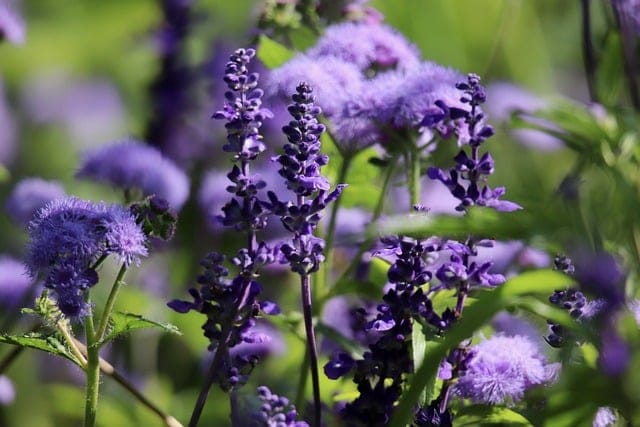How to grow Salvias
The Salvia flower, also known as sage, is a popular and beautiful flowering plant that is loved by gardeners around the world

In this article:
- Introduction
- Selecting the Right Variety of Salvias
- Choosing the Perfect Location
- Preparing the Soil for Planting
- Propagation Methods
- Planting Salvias
- Watering and Fertilizing
- Pruning and Maintaining Salvias
- Common Pests and Diseases
- Harvesting Salvias
- Overwintering Salvias
- Design Ideas for Incorporating Salvias in the Garden
- Conclusion
Introduction
The Salvia flower, also known as sage, is a popular and beautiful flowering plant that is loved by gardeners around the world. Its vibrant colors and aromatic foliage make it a great addition to any garden. This article will guide you through the process of growing Salvias, from selecting the right variety to harvesting the flowers.
Selecting the Right Variety of Salvias
There are numerous varieties of Salvias to choose from, each with its own unique characteristics. Some popular varieties include Salvia officinalis, Salvia nemorosa, and Salvia leucantha. Consider the size, color, and bloom time of the different varieties to find the perfect one for your garden.
Choosing the Perfect Location
Salvias thrive in full sun but can also tolerate partial shade. It's important to select a location that receives at least 6-8 hours of direct sunlight per day. Ensure that the area is well-draining to prevent root rot.
Preparing the Soil for Planting
Before planting Salvias, it's crucial to prepare the soil properly. The soil should be well-draining and rich in organic matter. Add compost or well-rotted manure to improve the soil's fertility. Remove any weeds or debris from the planting area.
Propagation Methods
Salvias can be propagated through various methods including seeds, stem cuttings, or division. Each method has its own requirements and advantages. Research the specific requirements of the variety you have chosen to ensure successful propagation.
Planting Salvias
Dig a hole slightly larger than the root ball of the Salvia plant. Place the plant in the hole and backfill with soil. Ensure that the crown of the plant is level with the soil surface. Gently firm the soil around the plant to eliminate air pockets.
Watering and Fertilizing
After planting, water the Salvias thoroughly to promote root establishment. Once established, water the plants deeply but infrequently, allowing the soil to dry out between waterings. Apply a balanced fertilizer according to the package instructions to provide the necessary nutrients for healthy growth.
Pruning and Maintaining Salvias
Regular pruning is essential for maintaining the shape and health of Salvias. Remove any dead, damaged, or diseased foliage and flowers. Cut back the plant in early spring to encourage bushier growth. Pinch off the tips of the plant regularly to promote branching and more flowers.
Common Pests and Diseases
Salvias are generally resistant to pests and diseases. However, they may occasionally be affected by aphids, whiteflies, or powdery mildew. Monitor the plants regularly and take appropriate measures such as using insecticidal soap or neem oil to control pests and providing adequate air circulation to prevent disease.
Harvesting Salvias
Harvest Salvias when the flowers are fully open but before they start to fade. Cut the stems just above a set of leaves to encourage new growth. Use the flowers in arrangements or dry them for later use in wreaths or potpourri.
Overwintering Salvias
In regions with cold winters, Salvias may need protection to survive. Apply a thick layer of mulch around the base of the plants to insulate the roots. You can also consider moving potted plants indoors or covering them with frost blankets or burlap.
Design Ideas for Incorporating Salvias in the Garden
Salvias can be used in various garden designs, from formal to cottage style. They can be planted as borders, in mixed flower beds, or even in containers. Consider combining Salvias with other flowering plants that complement their colors, such as lavender or roses.
Conclusion
Growing Salvias can bring beauty and vibrancy to your garden. By selecting the right variety, providing proper care, and following the guidelines outlined in this article, you can enjoy the colorful blooms and aromatic foliage of Salvias for years to come.
